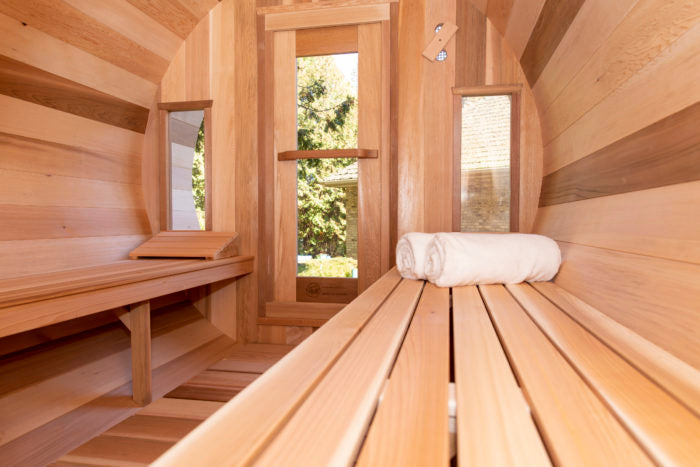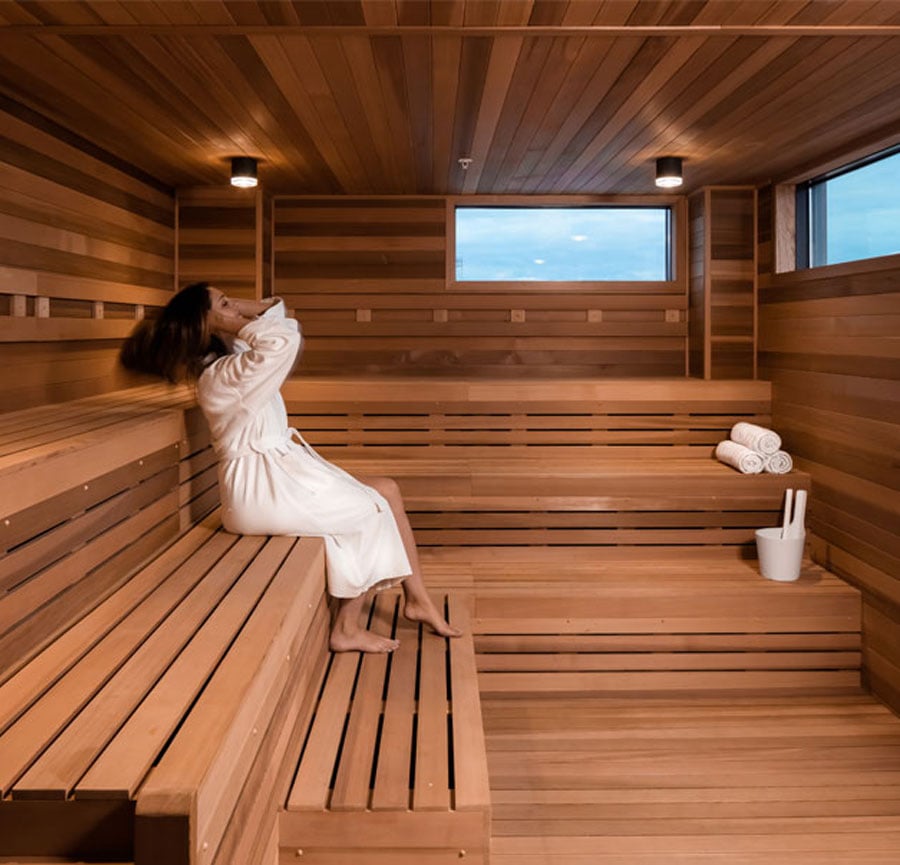Facts About Traditional Sauna Revealed
Wiki Article
Some Known Details About Traditional Sauna
Table of ContentsThe Single Strategy To Use For Traditional SaunaNot known Details About Traditional Sauna Some Known Incorrect Statements About Traditional Sauna The Greatest Guide To Traditional Sauna
The majority of the weight lost in a sauna is water loss and is re-gained upon rehydrating. Without a question sauna can be an important component of a healthy and balanced weight loss program. To take a look at the differences between traditional and IR saunas, I will divide these into proven, theoretical, and made distinctions.Therefore, the hottest factor in the saunawhich is at the ceiling straight over the sauna heateris typically between 185 and 190 F. Traditional Sauna. Claims that a traditional sauna exceeds 200 F is simply not true and not relevant for electric saunas marketed in the US. The temperature level for a far-infrared sauna is normally established between 120 and 140 F; nonetheless, unlike the typical sauna, the goal in and IR space is not to attain a high temperature level
Because of this, the temperature distinction is almost irrelevant, given that profuse sweating results in both sauna types, but the approach of heating the body is various. In an IR sauna the bather will really feel warm and will certainly sweat profusely, but at much lower temperatures. Hence, if the goal is to spend longer time periods in the sauna, the IR sauna is a great selection.

The smart Trick of Traditional Sauna That Nobody is Discussing
When the high temperature is achieved, the elements cycle on and off to preserve the heat. The majority of conventional sauna customers appreciate putting water over the rocks to develop heavy steam to raise sauna humidity degrees. The advantages of pouring water over the rocks consist of: making the area much more comfy, moistening the nasal passages, and allowing the use of aromatherapy by blending vital oils with the water.In a far-infrared sauna, the heat waves permeate the body to properly heat the body and elevate the body core temperature. To attain this boosted temperature, Far-infrared emitters create infrared energy which is close to the very same wavelength as that which the body naturally emitsoften referred to as the "Essential Range" of 7 to 14 microns), so the energy is well obtained by the body.
When the power enters the body, it causes the body temperature to raise directory and inevitably results in sweating. In an infrared sauna it is necessary for the emitters/heaters to continue to be on practically frequently. Given that there is no mass of rocks to preserve warm, the sauna will certainly cool down if the emitters turned off.
As stated over, the sauna bather in an infrared room wants to place himself in front of running emitters to obtain maximum advantage from the warmth. The heating time for both areas can be very different, depending upon just how the areas are made use of. For a typical sauna, a bather should enable 30-40 mins for the area to achieve a preferred temperature and to correctly pre-heat the rocks.
Some Known Details About Traditional Sauna
A well constructed sauna will typically achieve a temperature of 150-160 F in regarding 30-40 mins. For hotter temperature levels, the space may need to warmth for a longer duration.To some, 15 minutes was "squandered" while the infrared energy heated up the wood panels as opposed to heating a body, while others find a pre-heated room to be much more comfortable and think a raised starting temperature is needed to start perspiring. The length of recommended usage for each and every area is roughly the very same (10-15 minutes per session); nevertheless, because of the lower air temperature levels and the capacity to really feel the results of infrared warmth quicker than a traditional sauna, it is not unusual for a person to invest a total amount of 20-30 minutes in an infrared sauna.
Typical saunas tend to be bigger (thus make use of even more power) than infrared saunas, although typical saunas are definitely available in one and two individual sizes. For a two-person typical sauna, 5x6 or 5x7 dimension is most prominent. The top bench can easily seat 2 or three people and is also enough time to exist down throughout the sauna session.


The ordinary expense per kWH of power in the united state is roughly $0.11, so a 4.5 kW heater will set you back approximately $.50 to run for one hour, if the heating system runs continuously for one hour. Generally a sauna heating unit will certainly compete 75% of the very first hour and 50% of succeeding hours on considering that the components description cycle once the set temperature is achieved.
Traditional Sauna Fundamentals Explained
A 2 individual far-infrared space is generally physically smaller than a standard sauna, usually about 4' x 4' or smaller. The IR heater is normally 1.5-1.7 kW making use of a 120 volt 15 amp plug-in service. Because the room can be here are the findings utilized earlier than a sauna space, we will certainly think the space is utilized for to of an hour including warm up time.There is a seldom discussed distinction in the social experience in between the 2 spaces. While our society has actually shed a few of the social benefit of the traditional sauna experience, it can be extremely socially gratifying. From household time in the sauna, to heart-felt conversations with considerable others, to sauna partiesthe standard sauna experience can result in intimate mingling.
The majority of greater end infrared spaces include tinted light treatment, stereo and full-glass fronts. The dimension of many rooms enable 2 people to easily utilize the area, while some styles might enable a third or fourth person to make use of the area. Custom infrared spaces are also available, with space sizes available approximately 7' x 8' x 7' high.
Report this wiki page